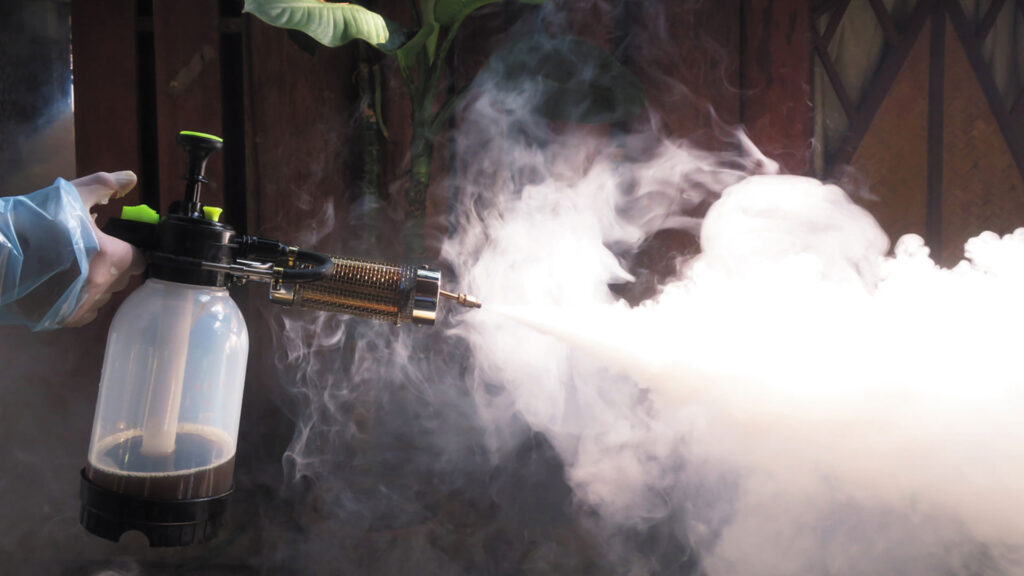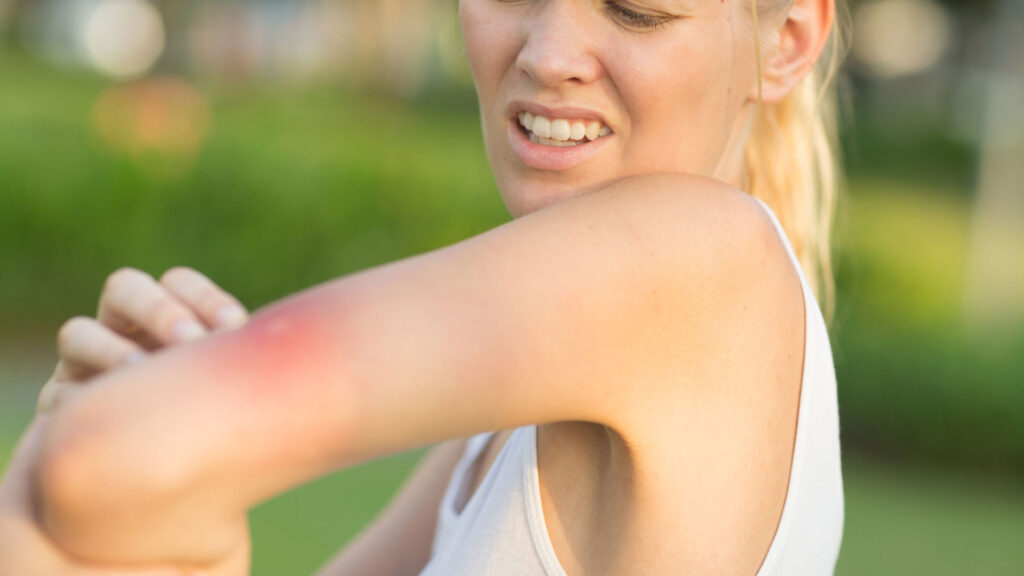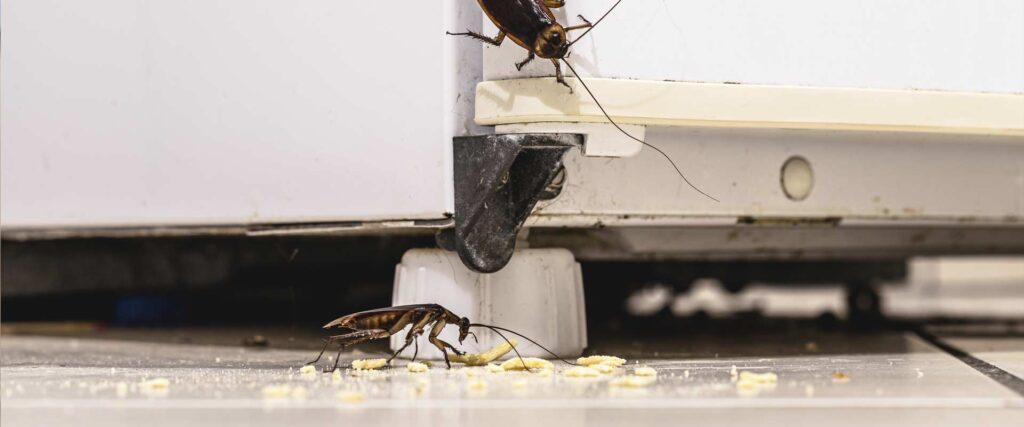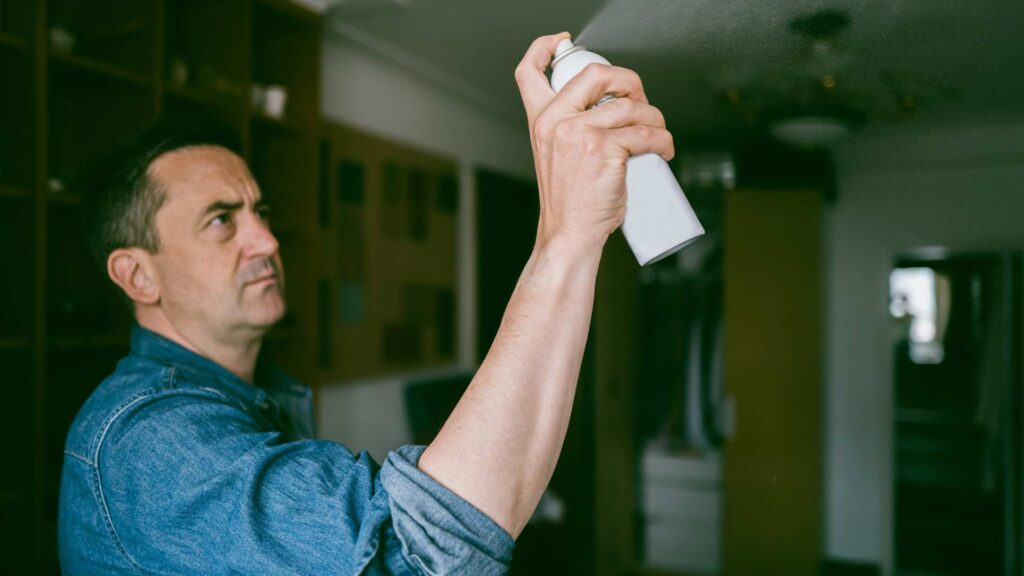Is Fogging for Mosquitoes Effective?
Fogging for mosquitoes can be effective in reducing mosquito populations and the spread of mosquito-borne diseases. This method involves dispersing insecticides in a fine mist, targeting adult mosquitoes. Its effectiveness depends on factors like the type of insecticide, timing, and local mosquito resistance. While fogging can yield positive results, it also raises health and environmental concerns, necessitating careful consideration and adherence to best practices for safe and effective use. Integrated pest management strategies are recommended for a comprehensive approach to mosquito control.

In the quest to maintain a safe and comfortable home environment, homeowners often confront the challenge of mosquito infestation. These tiny but formidable pests are not just a nuisance; they are carriers of serious diseases such as malaria, Zika, and West Nile virus. In this context, fogging emerges as a popular method to control mosquito populations. This technique involves dispersing insecticides in a fine mist, aiming to kill adult mosquitoes and, ideally, reduce the risk of disease transmission. However, the effectiveness of fogging as a mosquito control method is a subject of ongoing debate among experts, raising questions about its efficiency, health implications, and environmental impact.
The principle behind fogging is straightforward: by creating a cloud of insecticide, it targets flying mosquitoes, intending to reduce their numbers significantly. This method is particularly favored in areas experiencing outbreaks of mosquito-borne diseases or in regions with dense mosquito populations. However, the effectiveness of fogging is influenced by a myriad of factors. These include the type of insecticide used, the timing and frequency of fogging, the species of mosquito being targeted, and the local environmental conditions.
While the immediate impact of fogging might be visible in the form of decreased mosquito activity, its long-term effectiveness is a matter of scientific inquiry. Studies have shown varied results, with some indicating substantial reductions in mosquito populations, while others suggest only a temporary or minimal impact. This inconsistency can be attributed to the adaptive nature of mosquitoes, including their potential to develop resistance to common insecticides.
Beyond its efficacy, fogging raises significant concerns regarding human health and environmental safety. The chemicals used in fogging, though generally deemed safe for humans in controlled doses, can have adverse effects if misused. The risk is particularly acute for sensitive groups such as children, the elderly, and those with underlying health conditions. Moreover, the environmental implications of fogging are profound. Insecticides can inadvertently harm non-target species, including beneficial insects and aquatic life, disrupting local ecosystems.
Given these complexities, the article delves deeper into the nuances of mosquito fogging, exploring its scientific basis, health and environmental implications, and the broader context of mosquito control strategies. Through a blend of expert insights, case studies, and practical advice, the article aims to provide homeowners with a comprehensive understanding of whether fogging is a viable and responsible choice for mosquito control in their quest for a safe and healthy living environment.
The Science Behind Fogging
Fogging, as a method of mosquito control, involves the dispersal of insecticides in a fine aerosol mist, intended to target adult mosquitoes. This method’s effectiveness is grounded in several scientific principles and factors that influence its success.
The choice of insecticide is crucial in determining the effectiveness of fogging. Commonly used insecticides include pyrethroids, organophosphates, and malathion. Pyrethroids, synthetic chemicals similar to the natural insecticides found in chrysanthemum flowers, are widely favored for their effectiveness and relatively low toxicity to mammals. These chemicals work by disrupting the nervous system of mosquitoes, leading to their death.
Organophosphates, another group of chemicals, inhibit an enzyme essential for nerve function in insects, causing a breakdown in their nervous system. Malathion, a specific type of organophosphate, has been used extensively due to its effectiveness against a wide range of mosquito species.
The timing of fogging is critical. Mosquitoes are most active during dusk and dawn, making these times ideal for fogging. This ensures maximum exposure of mosquitoes to the insecticide. Additionally, environmental conditions like temperature, humidity, and wind speed can significantly impact the effectiveness of fogging. Ideal conditions would be a calm and cool evening when the mist can stay close to the ground and spread evenly.
Understanding mosquito behavior is key to effective fogging. Different species have different activity patterns and breeding habits, which can influence their exposure to fogged insecticides. Moreover, resistance development is a significant challenge. Continuous use of the same insecticide can lead to a selection for resistant mosquitoes, diminishing the method’s effectiveness over time. This necessitates regular monitoring of mosquito populations for signs of resistance and, if necessary, switching to different types of insecticides.
Research into the efficacy of fogging has produced varied results. Studies often focus on measuring the reduction in mosquito populations and the incidence of mosquito-borne diseases following fogging interventions. For instance, a study might track the mosquito population in a specific area before and after fogging, comparing it to a control area where no fogging was done. These studies help in understanding the real-world effectiveness of fogging and in refining the techniques and chemicals used.
The science behind fogging is complex, involving a careful consideration of the type of insecticide, the timing of application, environmental conditions, and mosquito behavior and resistance. While fogging can be effective under the right conditions, it requires a strategic approach backed by scientific research and regular monitoring to adapt to changing circumstances and mosquito populations.
Comparing Mosquito Control Methods
| Method | Effectiveness | Health Impact | Environmental Impact | Practicality for Homeowners |
|---|---|---|---|---|
| Fogging | High in some cases, varies with local conditions and mosquito resistance | Low to moderate, depending on exposure and insecticide used | Can negatively impact non-target species and aquatic ecosystems | Easy to implement, but requires adherence to safety guidelines |
| Eliminating Standing Water | Highly effective in reducing breeding sites | No direct health impact | No negative environmental impact | Simple and cost-effective, requires regular maintenance |
| Natural Predators (e.g., Dragonflies) | Varies, effective in specific ecosystems | No health impact | Positive impact on biodiversity | Depends on local ecosystem, may require introduction of species |
| Insecticide-treated Nets | Highly effective in preventing bites | Low, when used as directed | Minimal, focused on specific areas | Easy to use, affordable, and widely available |
| Chemical Repellents (e.g., DEET) | Highly effective in preventing bites | Low to moderate, some concerns with skin sensitivity and overuse | Limited, primarily personal use | Very practical for personal protection, requires regular application |
Health and Environmental Concerns of Mosquito Fogging
While mosquito fogging can be an effective measure in controlling mosquito populations, it raises significant health and environmental concerns that warrant careful consideration.
The primary concern with mosquito fogging centers around the insecticides used. Commonly, chemicals like pyrethroids are employed due to their effectiveness in killing adult mosquitoes. While these are generally safe for humans in low concentrations, there are risks associated with exposure, especially in sensitive groups.
- Respiratory Issues: Individuals with pre-existing respiratory conditions, such as asthma, may experience exacerbated symptoms following exposure to the chemicals used in fogging.
- Skin and Eye Irritation: Direct contact with the fog can cause skin and eye irritation. This is particularly concerning for children and pets, who are more likely to come into contact with treated areas.
- Long-term Exposure Risks: There is ongoing research into the long-term health effects of repeated exposure to the chemicals used in fogging. Concerns include potential impacts on the nervous system and reproductive health.
The environmental implications of mosquito fogging are equally significant. The broad-spectrum nature of many insecticides means they do not exclusively target mosquitoes but can also harm other insects and wildlife.
- Non-target Species: Beneficial insects, such as bees and butterflies, can be adversely affected by mosquito fogging. This has broader implications for ecosystems, particularly pollination processes.
- Aquatic Life: Many insecticides are toxic to fish and other aquatic organisms. Accidental or indirect exposure, such as through runoff into water bodies, can have devastating effects on aquatic ecosystems.
- Chemical Resistance: There is a growing concern about mosquitoes developing resistance to common insecticides. This not only reduces the effectiveness of fogging but also leads to the use of stronger chemicals, exacerbating health and environmental risks.
To mitigate these risks, several measures can be taken:
- Targeted Application: Using fogging selectively and in targeted areas can reduce the amount of chemical exposure to humans and non-target species.
- Timing of Fogging: Conducting fogging during times when people and beneficial insects are less active, such as early morning or late evening, can minimize exposure.
- Public Awareness: Educating the public about the risks associated with fogging and measures to minimize exposure is crucial. This includes staying indoors during fogging and avoiding contact with fogged areas until they are deemed safe.
- Alternative Methods: Encouraging the use of alternative mosquito control methods, such as eliminating standing water and using mosquito traps, can reduce the reliance on chemical fogging.
While mosquito fogging can play a role in controlling mosquito populations, the health and environmental concerns it raises cannot be overlooked. A balanced approach, combining chemical and non-chemical methods, and a focus on minimizing risks, is essential for a sustainable and safe mosquito control strategy
.
Alternatives and Best Practices in Mosquito Control
While fogging is a widely used method for mosquito control, it’s not the only strategy. Homeowners and communities can adopt various alternatives and best practices to effectively manage mosquito populations while minimizing health and environmental risks.
Alternatives to Mosquito Fogging
- Eliminating Breeding Sites: Remove Standing Water: Empty containers, unclog gutters, and change bird bath water regularly.
- Proper Landscaping: Ensure proper drainage in your yard to prevent water accumulation.
- Natural Predators: Introduce
Dragonflies: Known as natural mosquito predators.
Encourage Bats: Installing bat houses can help, as bats consume large numbers of mosquitoes. - Biological Control: Bacillus thuringiensis israelensis (Bti): A bacteria used in water sources that’s toxic to mosquito larvae but safe for other wildlife.
- Mosquito-Repellent Plants: Plant Lemongrass, Lavender, and Marigolds: These plants are known to have mosquito-repellent properties.
- Physical Barriers: Use Mosquito Nets and Screens: Effective in keeping mosquitoes out of living spaces.
- Integrated Pest Management (IPM): This holistic approach combines physical, biological, and chemical methods. The goal is to create a comprehensive plan that is both effective and environmentally sensitive. Key components include:
- Source Reduction: The most effective way to control mosquitoes is to eliminate their breeding sites. Homeowners should regularly check and remove standing water in pots, gutters, birdbaths, and other containers. This simple step can significantly reduce the mosquito population.
- Biological Control: This involves introducing natural predators of mosquitoes into the environment. For example, certain fish species, like Gambusia, or dragonflies can be effective in controlling mosquito larvae in ponds and water features.
- Landscaping Choices: Certain plants, like citronella, lavender, and marigold, are known to have mosquito-repelling properties. Incorporating these into garden landscaping can help deter mosquitoes naturally.
- Safe and Effective Use of Chemicals: When chemical controls are necessary, it’s crucial to use them responsibly to minimize potential harm:
- Targeted Application: Chemicals should be applied in areas where mosquitoes are most active, and during times when they are likely to be present, typically dusk and dawn. This targeted approach helps maximize effectiveness while reducing unnecessary exposure.
- Choosing the Right Insecticides: It’s important to use insecticides that are effective against the local mosquito population and have minimal non-target impacts. Products containing BTI (Bacillus thuringiensis israelensis), a bacterial toxin that specifically targets mosquito larvae, are often recommended for their safety and efficacy.
- Professional Assistance: For larger areas or severe infestations, professional pest control services can provide more effective and safer application of chemicals than DIY methods.
- Public Education and Community Involvement: Educating the public about mosquito breeding habits and prevention methods can be as crucial as direct control measures. Community-wide efforts, such as cleanup campaigns to remove trash and debris that can collect water, can significantly reduce mosquito breeding grounds.
- Monitoring and Adaptation: Regular monitoring of mosquito populations and their response to control measures is essential. This data can help adjust strategies over time, particularly in response to changes in mosquito behavior or resistance to certain control methods.
- Personal Protection: Finally, individual actions can significantly reduce the risk of mosquito bites. Using mosquito repellents, wearing long sleeves and pants, and using mosquito nets, especially during peak mosquito activity times, are effective personal protective measures.
While fogging can be a part of mosquito control, a combination of strategies is often necessary for effective management. By adopting a range of methods, from environmental management to responsible chemical use, communities and homeowners can control mosquito populations more sustainably and safely.
Navigating the Complexities of Mosquito Control through Fogging
As homeowners grapple with the challenge of mosquito control, fogging emerges as a method fraught with complexities. While it holds the promise of reducing mosquito populations and the diseases they carry, its effectiveness is not uniform across different environments and species. This variability necessitates a nuanced understanding of fogging as part of a broader mosquito management strategy.
The key to effective mosquito control lies in a balanced approach. Fogging, when used correctly, can play a pivotal role in reducing adult mosquito populations, especially in areas facing severe infestations or the threat of mosquito-borne diseases. However, its role should be viewed as part of an integrated pest management (IPM) strategy, which combines various tactics for a more sustainable and effective solution.
Homeowners and community leaders must be informed about the specific conditions under which fogging is most effective. This includes understanding the local mosquito species, their breeding habits, and their susceptibility to different insecticides. Timing the fogging to coincide with peak mosquito activity, usually during dusk and dawn, enhances its effectiveness while minimizing potential risks to humans and non-target species.
The health and environmental implications of fogging cannot be overstated. While modern insecticides used in fogging are generally safer than their predecessors, there is still a need for caution. Homeowners should be aware of the potential risks, particularly to children, pets, and wildlife. Communities should engage in open dialogues about the use of fogging, weighing its benefits against its risks, and exploring safer alternatives wherever possible.
Moreover, the potential for mosquito resistance to insecticides is a growing concern. Over-reliance on chemical methods like fogging can lead to the development of resistance, rendering these methods less effective over time. This underscores the importance of using a variety of control methods, including environmental management and biological controls, to keep mosquito populations in check.
While fogging can be a useful tool in the fight against mosquitoes, it is not a standalone solution. Its effectiveness varies based on local conditions and requires careful consideration of the potential health and environmental impacts. Homeowners and community leaders should adopt a holistic approach to mosquito control, combining fogging with other methods as part of an integrated pest management strategy. By doing so, they can effectively manage mosquito populations while safeguarding human health and the environment.
- Professional Fogging Services: Professional mosquito fogging typically ranges from $70 to $100 per application. This cost can vary based on the size of the property and the frequency of treatments. Some companies offer seasonal packages, which can range from $300 to $500 for several months of service.
- Mosquito Misting Systems: Installing a permanent misting system can be a significant investment, with costs ranging from $1,000 to $1,800 for the system, plus installation fees. These systems automatically release insecticide at set intervals and can be more cost-effective in the long run for larger properties.
- Larvicide Treatments: Applying larvicides to standing water areas to prevent mosquito breeding is another option. Professional larvicide treatments can cost between $100 and $150 per application, depending on the size of the area being treated.
- Natural and Biological Control Methods: Introducing natural predators like dragonflies or using bacterial insecticides like Bacillus thuringiensis israelensis (Bti) can be a more environmentally friendly option. The cost for these methods can vary widely, but homeowners can expect to spend around $30 to $100 for initial setup and supplies.
- DIY Methods: For those preferring to tackle mosquito control themselves, costs can be significantly lower. DIY foggers and insecticides can range from $20 to $50, while simple preventive measures like removing standing water are essentially free.
- Ultrasonic and Electronic Repellents: These devices claim to repel mosquitoes using high-frequency sound waves or other methods. Prices range from $20 to $100, but their effectiveness is often debated among experts.
It’s important for homeowners to weigh the costs against the effectiveness and environmental impact of each method. While some options may be more expensive upfront, they could offer more long-term relief and safety benefits. As always, consulting with a pest control professional can provide tailored advice for specific situations and needs.
Frequently Asked Questions About Fogging Mosquitoes
What exactly is mosquito fogging?
Mosquito fogging involves spraying a fine mist of insecticides into the air to kill adult mosquitoes. This method is often used in residential areas and public spaces to control mosquito populations and reduce the spread of mosquito-borne diseases.
How effective is mosquito fogging in controlling mosquito populations?
The effectiveness of mosquito fogging varies. It can significantly reduce mosquito populations in some cases, especially when conducted regularly and in conjunction with other mosquito control methods. However, its effectiveness can be limited by factors like insecticide resistance and environmental conditions.
Are there health risks associated with mosquito fogging?
When conducted properly, the health risks associated with mosquito fogging are generally low. However, exposure to high concentrations of insecticides or prolonged contact can pose health risks, particularly to sensitive groups such as children, the elderly, and those with respiratory conditions.
Can mosquito fogging harm the environment?
Yes, mosquito fogging can have environmental impacts. Insecticides used in fogging can affect non-target species, including beneficial insects and aquatic life. It’s important to use environmentally friendly insecticides and follow best practices to minimize these impacts.
What are the best times to conduct mosquito fogging?
Mosquito fogging is most effective when conducted during times of peak mosquito activity, typically at dusk and dawn. This timing helps to maximize the impact on mosquitoes while minimizing exposure to humans and non-target species.
Are there alternatives to mosquito fogging?
Yes, there are several alternatives to mosquito fogging, including eliminating standing water to prevent breeding, using mosquito traps, introducing natural predators like dragonflies, and applying personal protective measures like mosquito repellents.
How long does the effect of mosquito fogging last?
The duration of effectiveness varies, but typically, mosquito fogging provides temporary relief, lasting a few days to a couple of weeks. Regular fogging may be necessary in areas with high mosquito populations.
Is mosquito fogging safe for pets and wildlife?
While most insecticides used in fogging are designed to be safe for pets and wildlife, it’s important to follow safety guidelines. Pets and wildlife should be kept away from the treated area until the insecticide has settled.
Can mosquitoes develop resistance to fogging?
Yes, mosquitoes can develop resistance to the insecticides used in fogging, which can reduce the method’s effectiveness over time. This highlights the importance of using a variety of mosquito control methods.
Who should I contact for mosquito fogging services?
For mosquito fogging services, contact local pest control professionals or your local health department. They can provide information on safe and effective fogging practices and regulations in your area.




